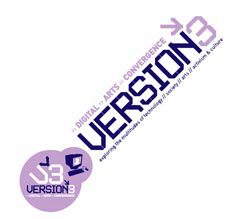PANEL The Post-Realistic Age: The Generation of Super Broadband Communication
March 27th, 2003 - March 30th, 2003
Categories: Applications, Devices, MFA Thesis, Multimedia, Networking, Software, Tele-Immersion, VR Art

About
PANEL
Date: Saturday, March 29, 2003
Time: 10-11:45 AM
Co-presented by University of Illinois at Chicago (UIC) and Northwestern University (NWU). A panel of artists, computer scientists and academic scholars discuss the impact of high-speed networking on culture, scientific research, and the arts. University of Ottawa’s Pierre Levy will discuss whether networking advancements influence the arts and shape culture. UIC’s Dan Sandin will discuss the aesthetic and technical issues of exhibiting virtual reality and tele-immersive applications. UIC’s Jason Leigh will discuss gigabit-enabled research at the Electronic Visualization Laboratory. NWU’s Paul Hertz will discuss what promise the Internet holds for new models of collaborative communication. UIC’s Franz Fischnaller will discuss his recent networked virtual reality art piece CityCluster. UIC’s Alex Hill will discuss the objective realities and creative possibilities of newly emerging networked virtual reality artwork. Moderated by Annette Barbier, director of Northwestern University’s Center for Art and Technology.
GUESTS:
Pierre Levy, Cyber-philosopher, Canada Research Chair in Technology and Knowledge Transfers, University of Ottawa
Dan Sandin, Media artist, Professor Emeritus, University of Illinois at Chicago
Jason Leigh, Associate Professor, Department of Computer Science, University of Illinois at Chicago
Paul Hertz, Artist, Northwestern University
Alex Hill, Doctoral candidate, Department of Computer Science, University of Illinois at Chicago
Franz Fischnaller, Media artist, Professor, University of Illinois at Chicago
MODERATOR:
Annette Barbier, Associate Professor, Northwestern University
PRESENTATION, SCHEDULE, AND TOPICS:
Annette Barbier (10 min.)
Introduction of the Panelists
Pierre Levy (15 min.)
“Collective Intelligence” within its anthropological context
Do networking achievements influence the arts and shape culture? Does emerging technology and digital innovation really help make humanistic and cultural changes in the evolution of humankind’s history, and do they generate a genuine interchange of knowledge and information?
Dan Sandin (15min.)
Virtual Reality and Tele-Immersion: “Better Than Being There”
After more than a decade in development, is this medium ready for exhibition in art museums and galleries? What are the options? What are the major aesthetic and technical issues?
Jason Leigh (15 min.)
Scientific advancements using the new super broadband networks
Is work being done at University of Illinois at Chicago’s Electronic Visualization Laboratory representative of the “Gigabit Networking Age?” Can this laboratory serve as a model for the next generation of super broadband users?
Paul Hertz (15 min.)
Drunk on Technology, Waiting for the Hangover
With spam and porn as the Internet’s most egregious growth industries, has its utopian bloom faded? For one giddy moment the vision of a world bound together by an emerging networked consciousness held promise. Whether this technology could further humanity’s collective voyage from effective mass illiteracy to critical thought and self-determination seemed too serious a question for those hallucinatory times. Now that the party is over, perhaps it is the only question still worth asking. The Internet functioning as a media feeding tube is technically feasible, however, collaborative models of communication have not been entirely displaced by models of passive consumption. This gives us cause for hope. Can we nurture on-line communities and avoid turning the Internet into a new form of television?
Franz Fischnaller (10 min.)
The CityCluster Project - a virtual-reality networking matrix with original technological features, navigation, interaction, graphics and content style.
This creative virtual networking terrain contains ingenious tools to allow visitors to use their own creativity and communicative skills. CityCluster’s framework employs a creative method of tracing diverse concepts in cities, both real and imagined, with ambiences and habitats interconnected by a high-speed network. Participants in remote locations can interact and collaborate in shared environments.
Alex Hill (10 min.)
The technical and creative challenges of the CityCluster Project.
What are the relevant features of the application, and why are they innovative? Recent technological advances are spurring new kinds of artistic creativity by opening new scenarios and possibilities, where innovative content can emerge through networking, interactive narrative techniques, architecture and digital effects.
Q/A (15 min.)